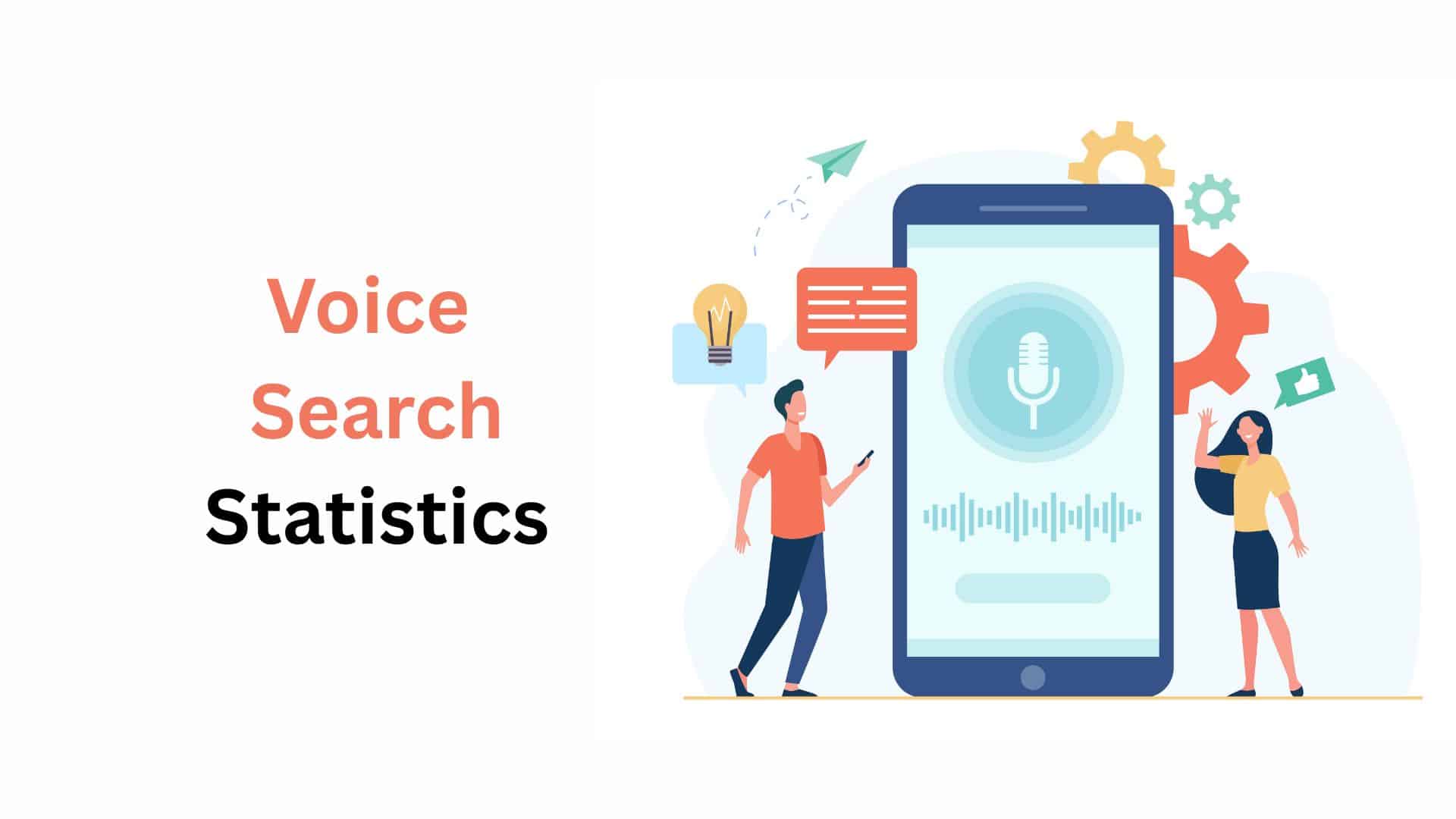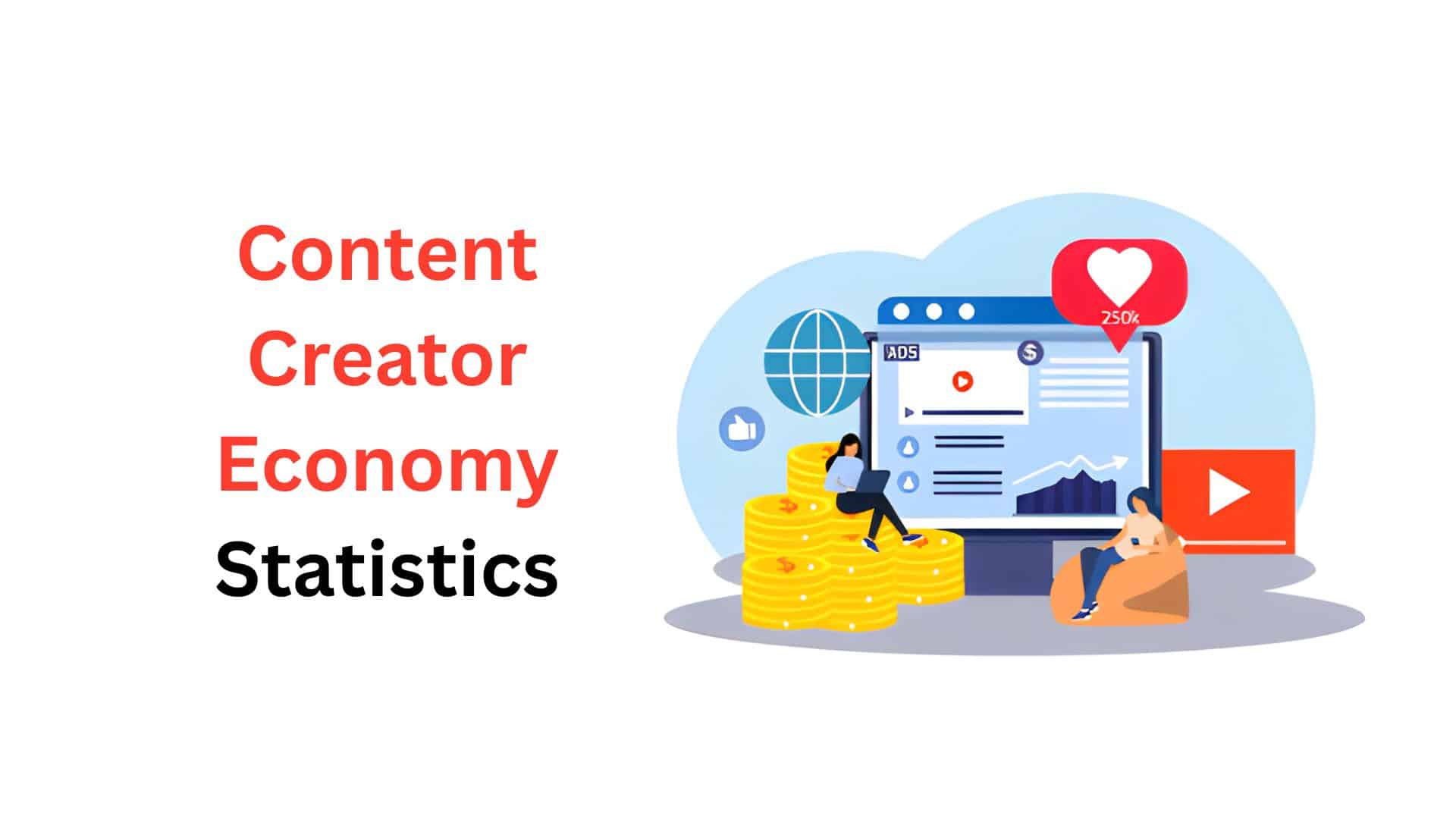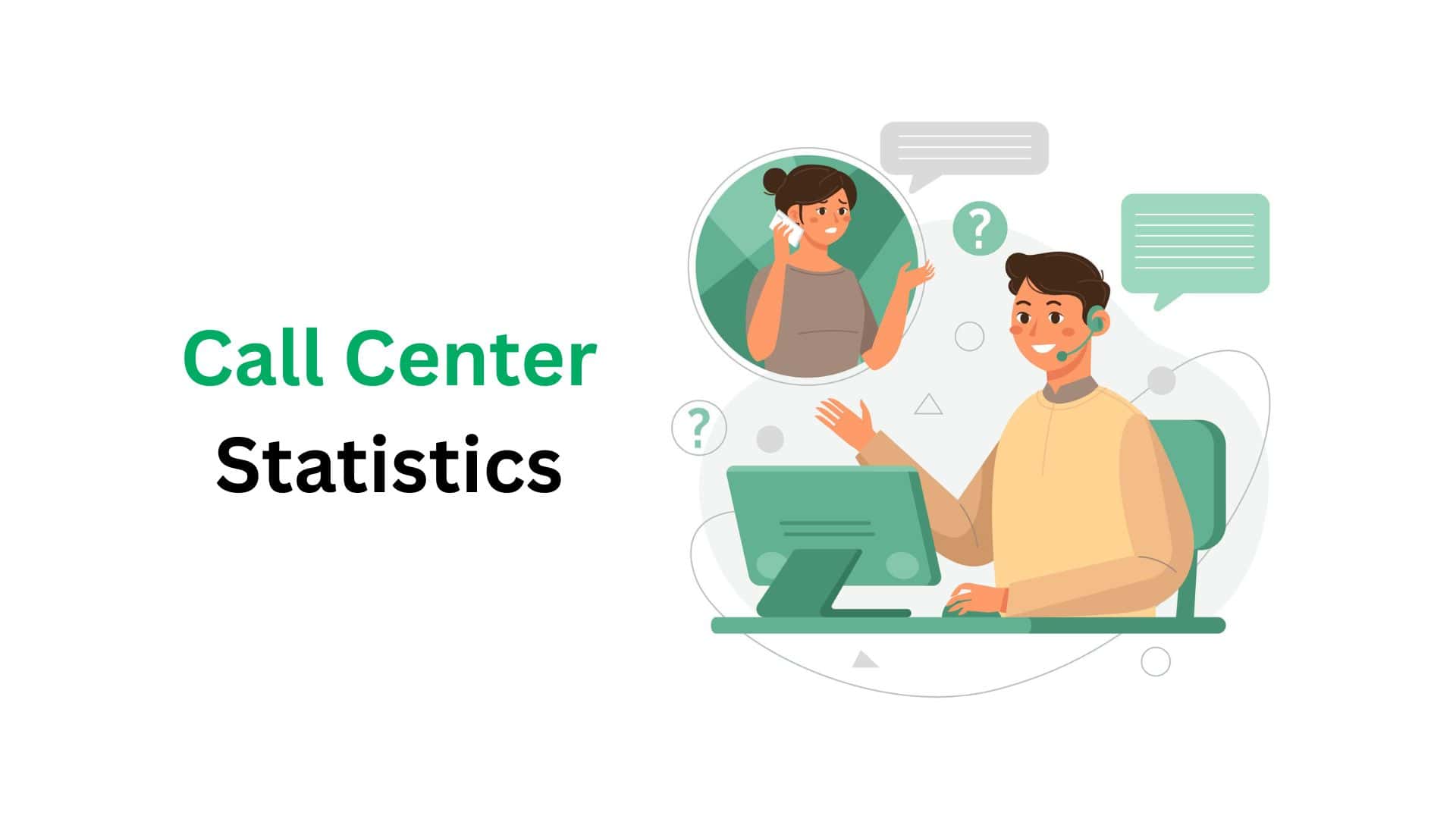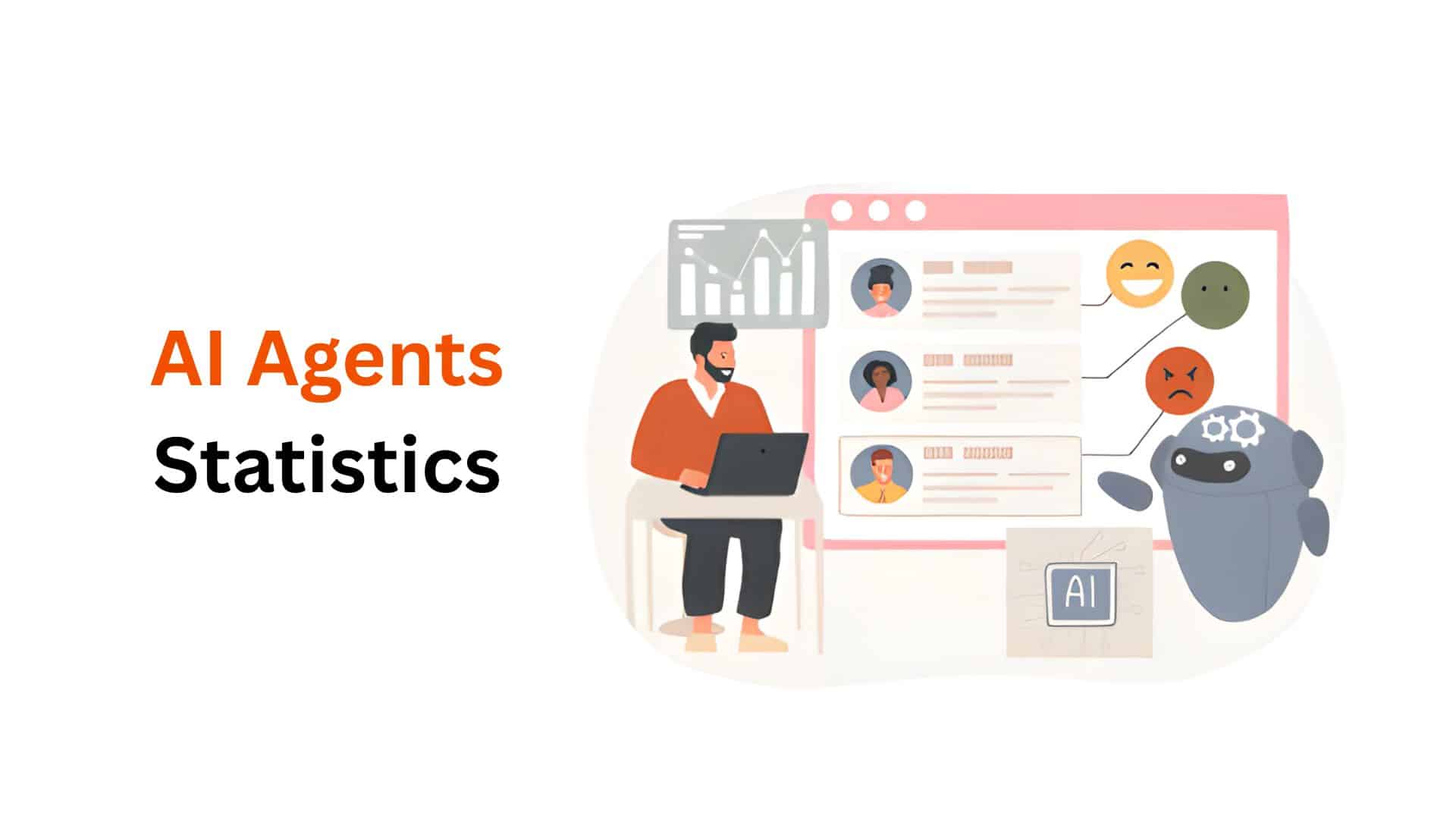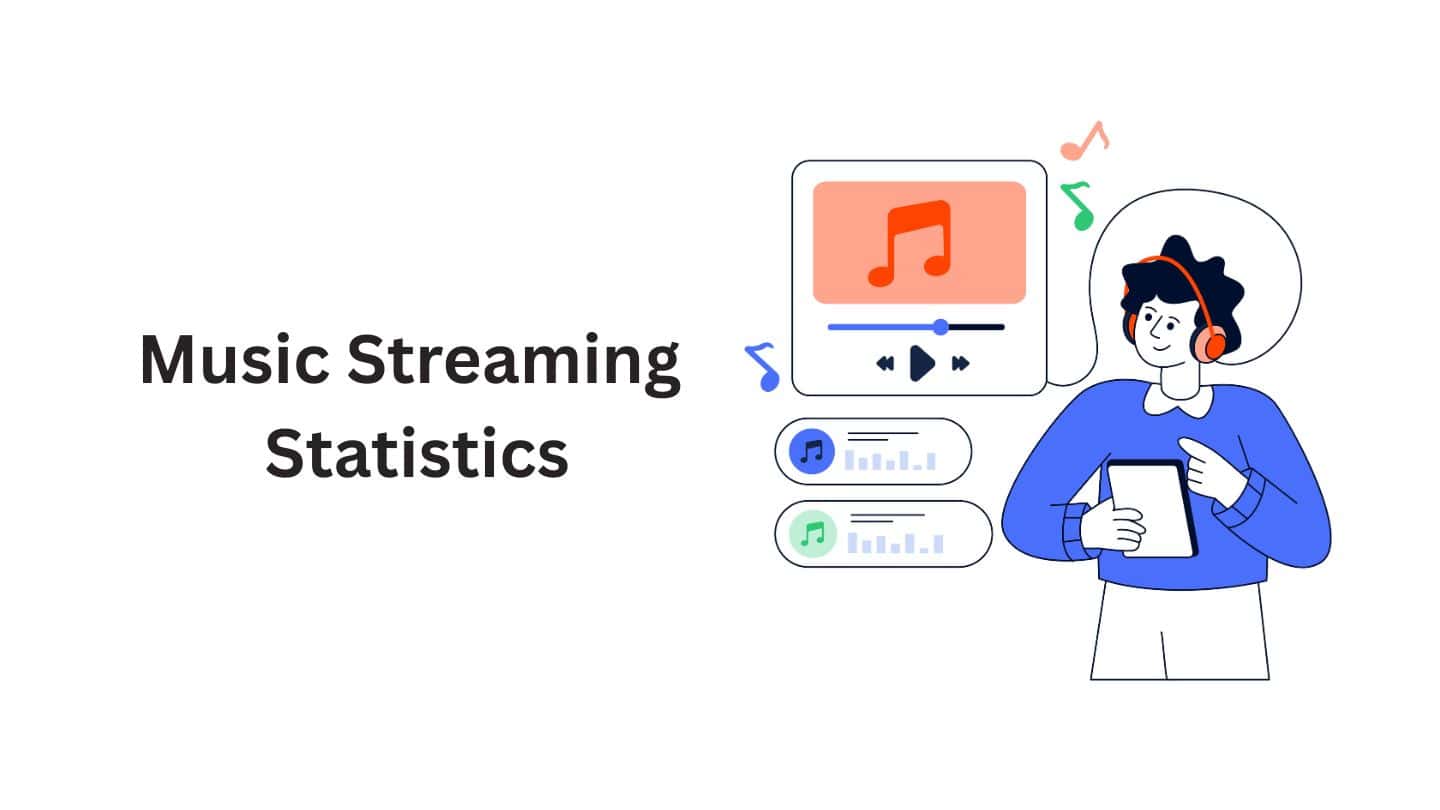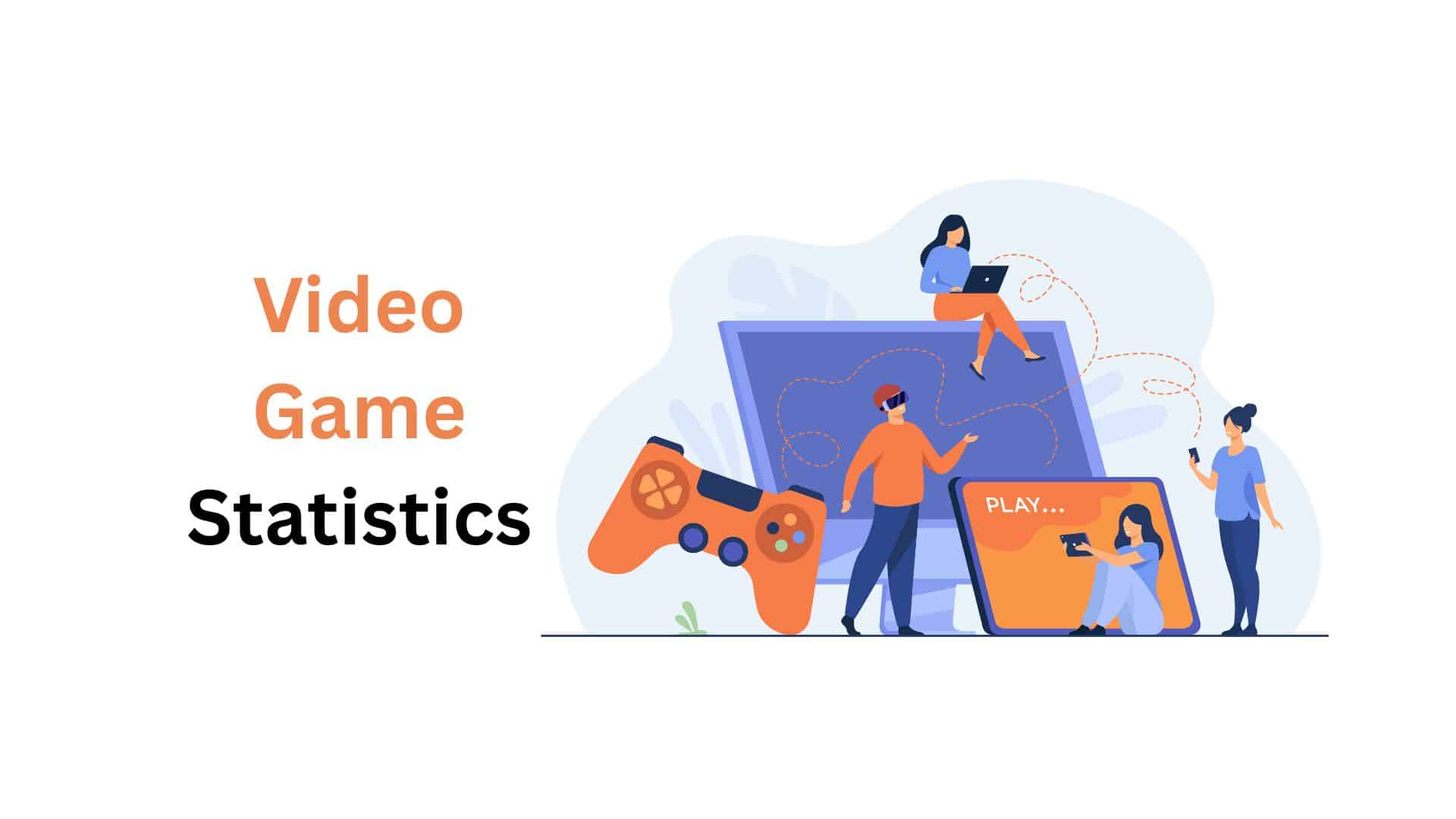Sleep Statistics By Mental Health And Facts (2025)

Updated · May 13, 2025

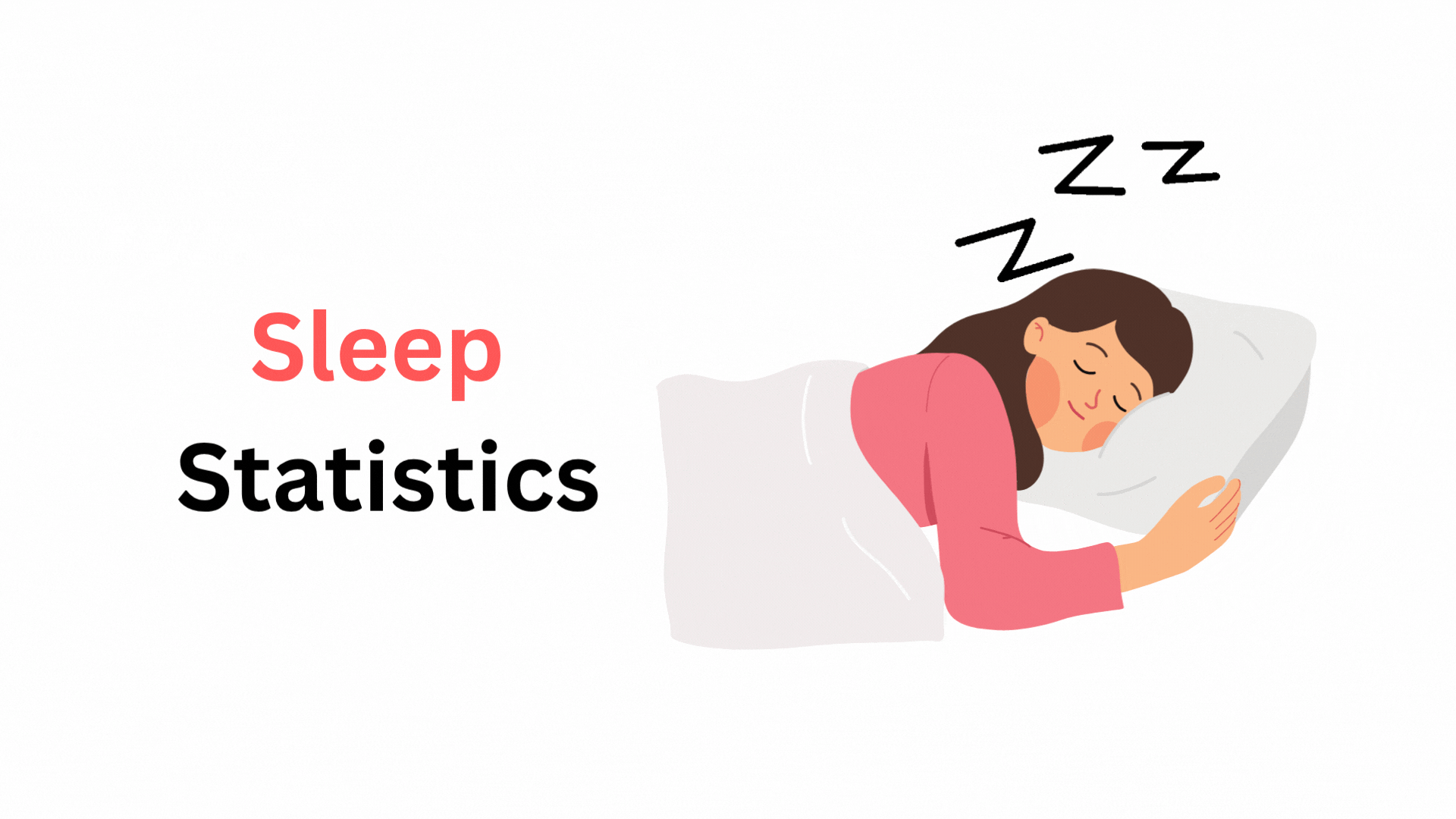
WHAT WE HAVE ON THIS PAGE
Introduction
Sleep Statistics: Sleep is a fundamental component of overall health, yet a significant portion of the adult population fails to obtain the recommended amount. Adults are advised to sleep between seven and nine hours per night. However, only 31% manage to achieve this duration for at least five nights each week. In the United States, approximately 35% of adults report sleeping less than seven hours per night.
The consequences of insufficient sleep are profound. Chronic sleep deprivation is linked to an increased risk of cardiovascular diseases, including heart attacks and strokes. It also elevates the likelihood of developing type 2 diabetes, obesity, and mental health disorders such as depression and anxiety. Moreover, sleep deficiency impairs cognitive functions, leading to decreased attention, memory lapses, and poor decision-making.
The economic impact is equally alarming. In the United States alone, insufficient sleep is estimated to cost over USD 411 billion annually due to lost productivity, increased healthcare expenses, and accidents.
Given these statistics, it is imperative to prioritize quality sleep as a cornerstone of health and well-being. Sleep deprivation can lead to both physical and mental health issues, a higher risk of mortality, and an increased likelihood of accidents. Let’s delve deeper into sleep statistics in this article.
Editor’s Choice
- 32.3% of adults in the U.S. experience insufficient sleep, down from 34.5% in 2018.
- 50 to 70 million American adults have sleep disorders, including insomnia, sleep apnea, and narcolepsy.
- 12.6% of men and 3.3% of women report having obstructive sleep apnea.
- 30% of U.S. adults suffer from insomnia, with 10% dealing with chronic insomnia.
- The average American sleeps less than 7 hours per night.
- Over 4% of U.S. adults use sleep medications or aids. Usage is higher among women (5%) compared to men (3.1%).
- The U.S. economy loses up to USD 411 billion annually due to insufficient sleep.
- Chronic sleep deprivation increases the risk of obesity, diabetes, hypertension, heart disease, and stroke. Those sleeping less than 6 hours per night are 20% to 32% more likely to develop hypertension.
- Almost 20% of car crashes are linked to sleepiness.
- Hawaii has the highest rate of insufficient sleep at 39.4%, while Colorado has the lowest at 26.8%.
- Up to 50% of children have sleep problems, with 10% to 30% affected by behavioral insomnia.
- Over 28% of adults use mobile phones to track their sleep.
- People who sleep less than 7 hours often consume alcohol.
- The U.S. could add USD 226.4 billion to the economy if people increased their sleep to 7 hours per night.
- Each year, nearly 100,000 deaths in American hospitals are due to medical errors linked to sleep deprivation.
- 90% of sleep paralysis cases include moments of fear.
- About 6% of the population lives with someone struggling with a sleep problem.
- Women are more likely to sleep slightly longer than men.
- 7% of people believe sleep issues are hereditary.
- The average sleep time decreases by 27 minutes each decade.
- Adults typically take around 4.8 mg of melatonin to address sleep issues.
You May Also Like To Read
- Mental Health Statistics
- AI in Healthcare Statistics
- Abortion Statistics
- Vegan Statistics
- Fitness Industry Statistics
- Color Psychology Statistics
- Fitbit Statistics
- Health and Wellness Industry Statistics
- Phobia Statistics
- Depression Statistics
- Social Anxiety Disorder Statistics
- Vitamin and Supplements Industry Statistics
- Breast Cancer Statistics
- Cancer Statistics
- Weight Loss Statistics
General Sleep Statistics
- Whereas sleep cycles differ in length, every sleep cycle can last for almost 90 minutes.
- Rapid Eye Movement (REM) sleep accounts for almost 20% to 25% of a well-grown adult’s total sleep time.
- As the sleep cycle progresses through a non–rapid eye movement (NREM) sleep, different bodily functions slow down or stop altogether. Metabolism decreases by almost 15%, and both the heart rate and blood pressure also decrease.
- In the median, we all spend almost 2 hours every night dreaming, generally during Rapid Eye Movement.
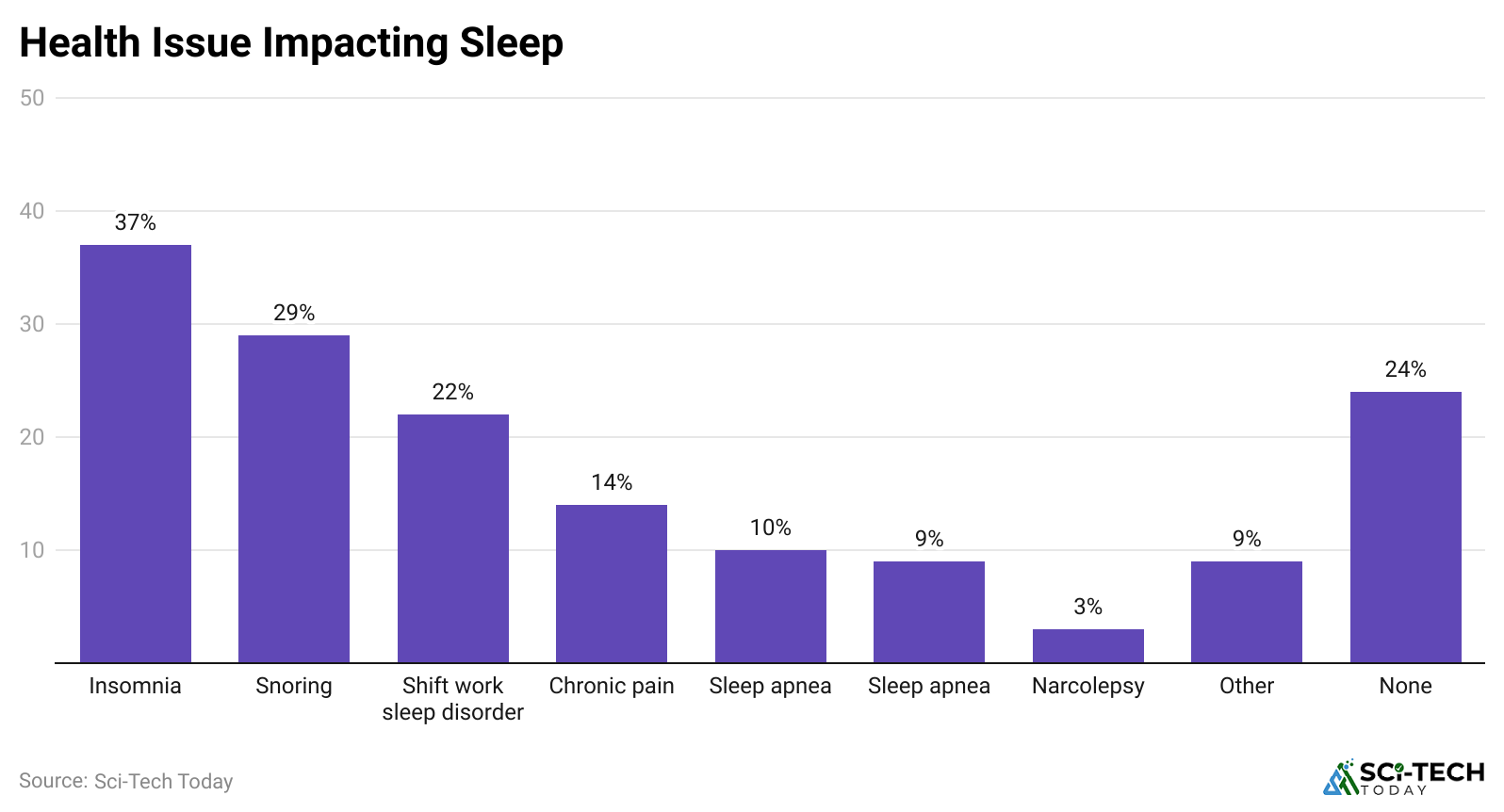
(Source: healthmatch.io)
- In the above chart, we can see the Health problems that impact sleep.
- As we can see, almost 37% of people face sleep disorders due to Insomnia.
- Around 29% of people face sleep disorders due to Snoring.
- Virtually 22% of people face sleep disorders due to Shift work sleep disorder.
- Around 14% of people face sleep disorders due to Chronic pain.
- 10% of people face sleep disorders due to Sleep apnea.
- As we can see, almost 3% of people face sleep disorders due to Narcolepsy.
- About 9% of people face sleep disorders due to other reasons, like watching mobile phones or television.
- In the median, adults sleep on their side almost 54% of the time, 38% on their back, and 7% on their stomachs.
- Around 41% of United States healthcare employees witnessed Insomnia during the pandemic.
- Drowsy driving accounts for almost 10% of all fatal motor vehicle crashes.
- Poor sleep is linked to almost 58% growth risk of obesity.
- According to the Sleep Statistics, 33% of the United States suffers from insufficient sleep.
- Approximately 2 out of 5 adults have witnessed apnea.
- Almost 50 million to 70 million adults in the United States have wakefulness or sleep issues.
- Almost 35% of the people state that they get less than the known 7 hours of sleep every night.
- Around half of the population in the United States has a regular sleeping partner.
- Almost 40% of the people in the United States wear their sheets every week, whereas 32% of the sheets are washed every two weeks.
- Moreover, 51% of the population wash their pillows every three months.
- Two out of 10 people in the United States prioritize sleep over social life, fitness, work, and hobbies.
- Around 5% of the population in the US gets less than 7 hours of sleep.
- Around 68% of the US population strives to sleep at least one day per week.
- On Average, a person needs a minimum of 7 minutes to fall deep asleep.
- Sleep Statistics show that an additional 60 to 90 minutes of sleep each night makes a person happy and healthy.
- People who generally follow a strict cycle are twice as likely to feel active and well-rested during the day.
- People who follow a sleep schedule of 5 to 6 hours of sleep are more likely to fall ill than people who get around 7 hours of sleep each day.
- About 48% of the people in the United States snore each day.
Dream Statistics
- According to the National Sleep Foundation, the population of almost ten years old dreams 4 to 6 times and for almost 2 hours every night.
- According to the Better Sleep Council, about 50% of dreams are forgotten within 5 minutes of waking up, and 95% are lost by the time you get out of bed.
- Neuroscience states that 65% of dreams show emotions of sadness and anger, whereas 20% of dreams show excitement and happiness.
- Cognitive Brain Research states that a study finds that those who had REM sleep performed 32% better at solving puzzles than those with non-REM sleep.
- Around 70 % of the time, males have dreams that feature other men, whereas females dream about men and women equally, according to the Better Sleep Council.
- As per Frontiers in Human Neuroscience, a Brazilian survey states that 77% of the respondents had a lucid dream at least once.
- As per the survey, about 5000 years ago, early dreams were recorded on clay tablets.
- According to the Sleep Statistics, around 8.4% of people are mostly prone to sleepwalking, especially children.
- Virtually 5% of the adults report talking when they are in deep sleep.
- According to Wiley Online Library, almost 48% of the people in dreams are people who are known very well.
- The processing of thoughts in a dream takes almost seven days.
- BBC, The earliest dreams recorded were registered on clay tablets for 5000 years.
- According to Medical News Today, each person dreams. If we don’t remember, others are forgotten.
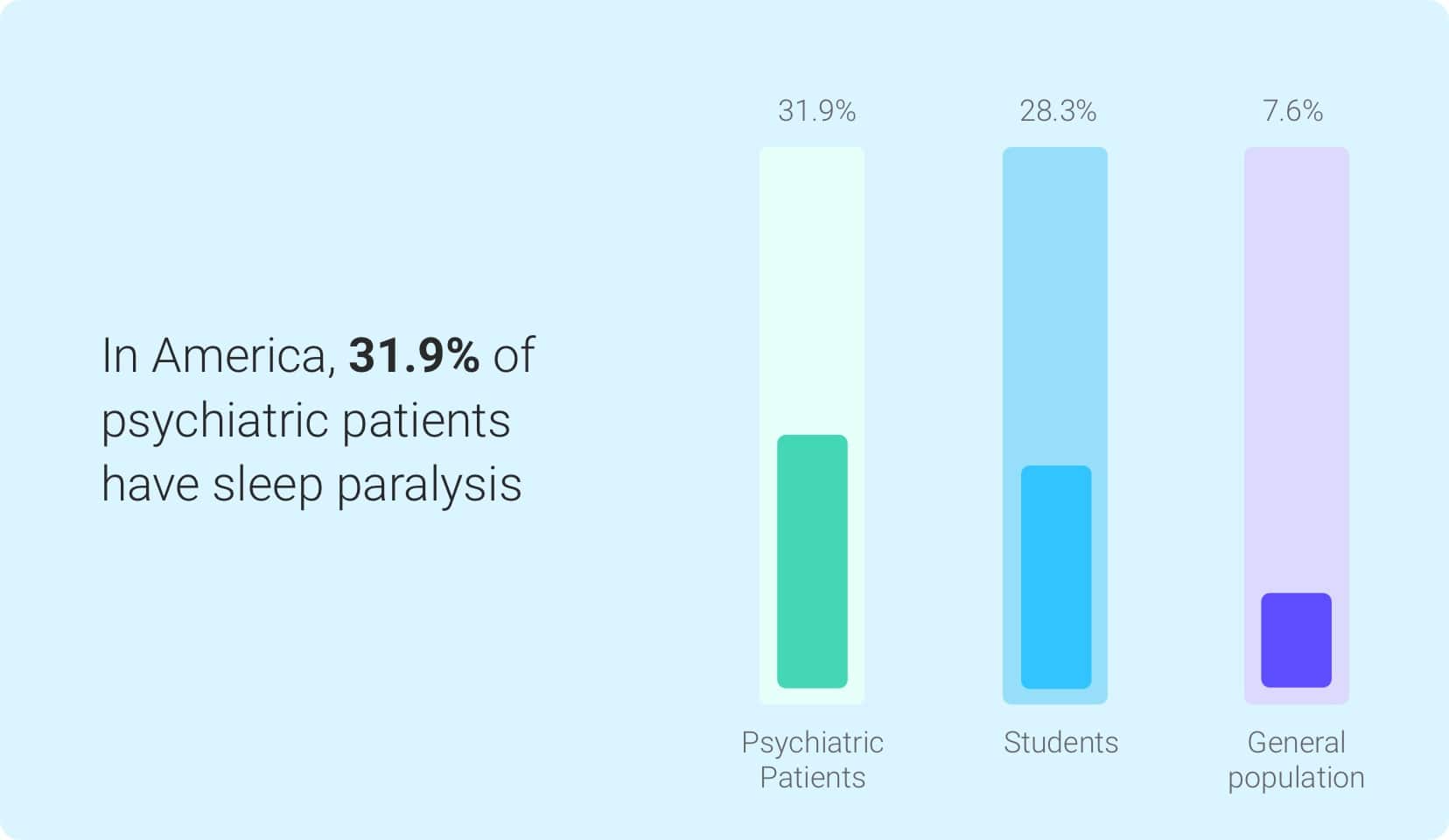
(Source: sleepjunkie.com)
- The above charts show that almost 7.6% of the general population, nearly 28.3 % of the students, and around 31.9% of psychiatric Patients have sleep paralysis.
- The parasomnia affects almost 10% of the population in the United States, according to the U.S National Library of Medicine
- The Medical News Today, you can have 3 – 6 dreams in one night.
- S. National Library of Medicine, Hallucinations happen in about 75% of the population with sleep paralysis.

(Source:instagram.com)
- In the above chart, we can observe the Dream Portfolio Returns as of 31st January 2024.
- The Dream, since its inception, has a 29.29% CAGR and a BSE 500 of 21.14%.
- In 6 months, 21.99% are dreams, and 15.64% are S&P BSE 500.
- In 1 year, 50.9% are dreams, and 31.65% are S&P BSE 500.
- In 2 years, 21.85% are dreams, and 14.90% are S&P BSE 500.
- In 3 years, 29.89% are dreams, and 20.33% are S&P BSE 500.
- As per Clinical Depression UK, those people who suffer from depression dream 3 to 4 times more than the median.
- At the Cleveland Clinic, 75% of us dream in color. Before color TV was launched, around 15% were.
- As per BBC News, blind people can see visuals in their dreams, but only if they were not born blind.
- Stanford University, you cannot create faces in your dreams, dreams about people you have seen before, even briefly.
- How Stuff Works stated that if people snore, they will likely not be dreaming.
- According to Psychology Today, recurring dreams occur in almost 60% to 75% of the population. Repetitive dreams are usually related to being chased, missing an exam, or losing control over driving a car.
- In a male’s dream, almost 70% of the population that appears are also men, while in a female’s dream, there is an equal number of genders.
- Around 8.4 million people can sleepwalk, and the majority are kids.
Sleep and Mental Health Industry Statistics
- Sleep plays a big role in mental health. When people don’t get enough sleep, they are more likely to have mental health issues. For example, if someone is sleep-deprived, they are 4.5 times more likely to have psychiatric problems.
- This shows how important it is to get enough Sleep. For every 41 out of 100 people who struggle to sleep well, one may develop depression. This is a big warning that we need to take Sleep seriously for our mental health.
- If adults often have trouble sleeping and don’t get help for it, they are 65% more likely to show signs of depression.
- Also, sleep problems are very common in people with post-traumatic stress disorder (PTSD), with 80-90% of them experiencing sleep issues.
- Sleep problems are also seen in kids with Autism Spectrum Disorder (ASD). Around 50-80% of these children have insomnia, which can affect their mental health.
- In the US, between 50 to 70 million adults have sleep disorders. These disorders can increase the chances of having mental health problems.
- Not getting enough sleep can increase anxiety risk by more than double. It can also shrink a part of the brain called the hippocampus, which affects memory and emotions.
- People who sleep less are almost twice as likely to develop schizophrenia. This is a serious mental health issue.
- Most teenagers don’t get the recommended eight hours of Sleep per night. This can make them more likely to have mental health problems.
- When people seek help for mental health issues, about 68% of them also have sleep problems. This shows how closely linked Sleep is to mental health.
- In college, students who sleep less than eight hours are 1.6 times more likely to have mental health problems
- Having irregular sleep patterns can increase the risk of getting major depressive disorder by 42%
- Additionally, people who lack sleep are more likely to report poor mental health at work. This can impact their productivity and well-being.
- People with a rare sleep disorder called narcolepsy are 3.5 times more likely to have anxiety issues.
- These insights show why Sleep is crucial for mental health. Prioritizing good sleep habits can help prevent or manage mental health issues. It’s essential for everyone, from adolescents to working adults, to get enough quality sleep for their well-being.
Global Sleep Statistics
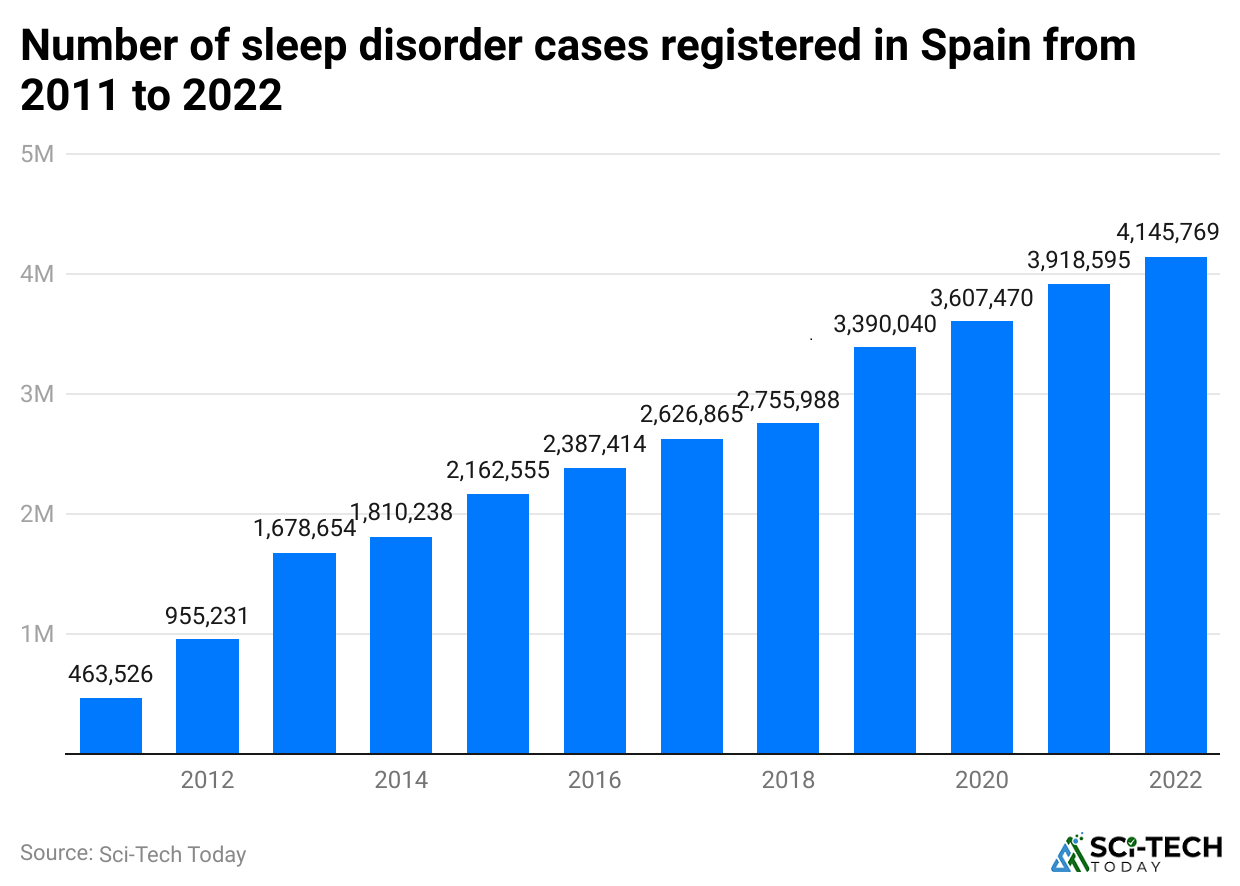
(Reference: statista.com)
- The chart above shows the number of sleep disorder cases that were registered in Spain from 2011 to 2022.
- In 2022, more than 4.1 million sleep issue cases were filed in Spain, and almost 3.9 million issues were registered within a year.
- The field cases of sleep issues show a growing trend during the period of analysis.
- Mostly, a survey that was conducted in 2020 has stated that almost three out of 10 Spanish women who are above 65 years old consume anxiolytics.
- According to the Sleep Research Society, more than 20% of people in Canada and the United States have experienced insomnia.
- According to the Philips Global Sleep Survey, around 62% of adults worldwide state they do not sleep as well as they did before.
- According to Sleep Statistics, nearly 67% of people state that their sleep problems occur only for one night.
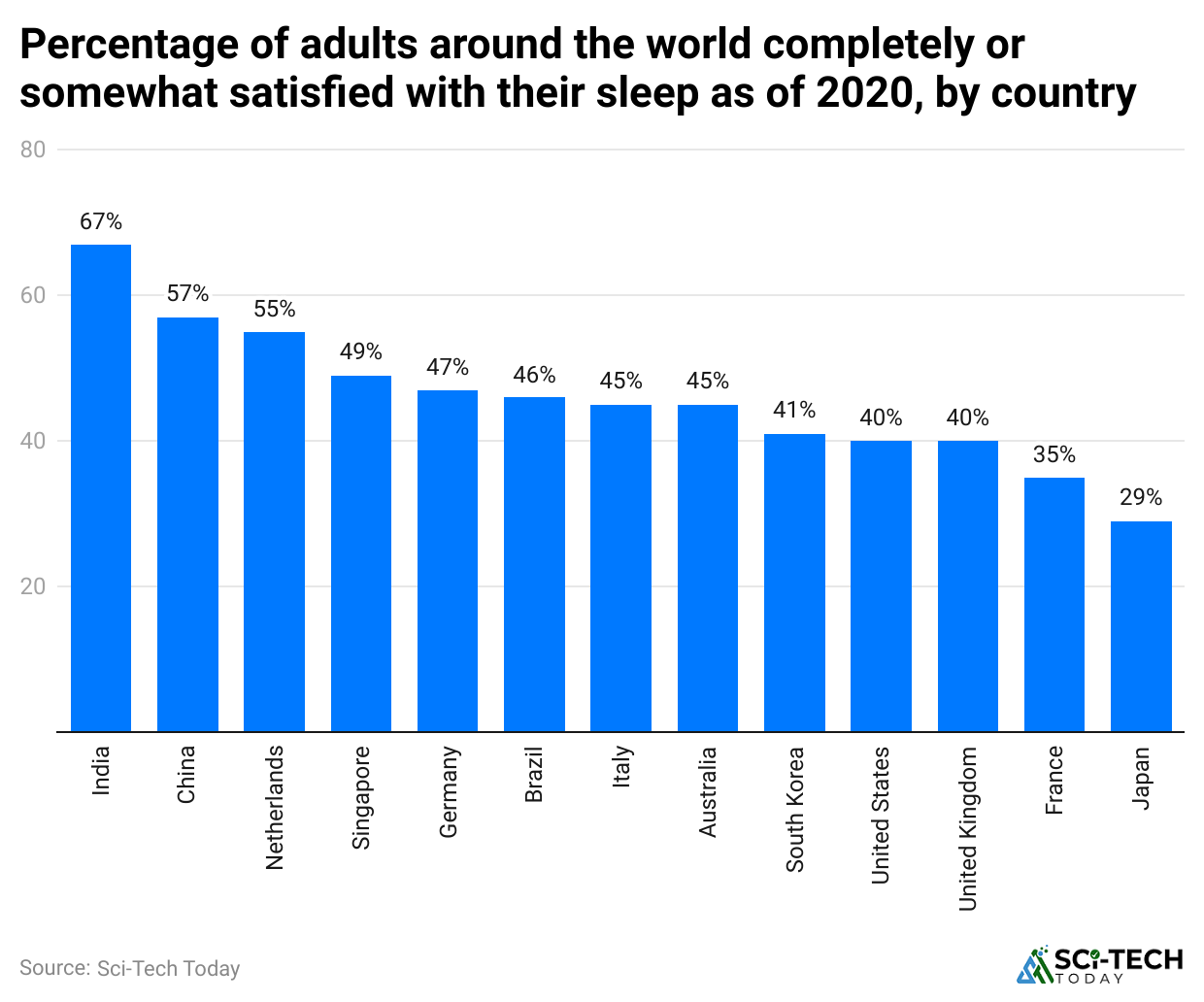
(Reference: statista.com)
The above chart shows the percentage of the global population that is completely or partially satisfied with their sleep cycle by country.
- In 2020, people worldwide varied in their sleep satisfaction levels. Around two-thirds of the population in India were satisfied with their sleep, compared to less than one-third of the people in Japan.
- As the charts show,67% of the people in India are satisfied with their sleep cycle.
- Accordingly, 57% in China, 55% in the Netherlands, 49% in Singapore, 47% in Germany, 46% in Brazil, 45% in Italy, 45% in Australia Italy, 41% in South Korea, 40% in the United States, 40% in the United Kingdom, 35% in France and 29% in Japan.
- Seven out of nine adults worldwide want to improve their sleep, but just 60 have not asked for help from a medical professional.
- Almost 44% of people worldwide state that the quality of their sleep has deteriorated over the past five years.
- As per the CDC, about 70 million people in the United States have a chronic sleep issue.
- 2 out of 4 people don’t get quality sleep regularly.
- Almost 30% of the general population over 18 years old experiences incomplete and insufficient sleep.
- 88% of people in the United States are losing sleep because of binge-watching.
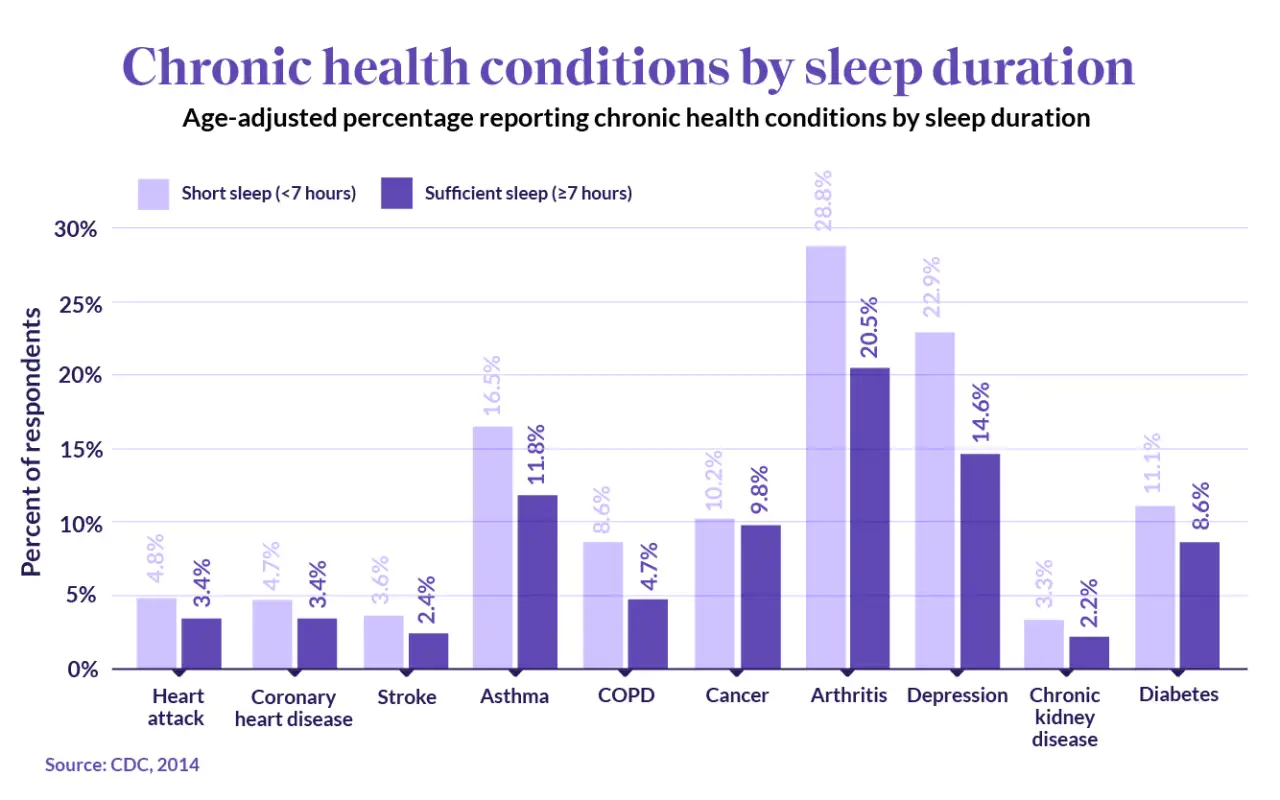
(Source: healthmatch.io)
- The above chart states that chronic health conditions occur with sleep duration.
- As we can see, due to short sleep that is less than 7 hours, the probability of a heart attack is 4.8%, while if sufficient sleep is taken, that is more than or equal to 7 hours, the probability of a heart attack at 3.4%.
- As we can see, due to short sleep that is less than 7 hours, the probability of Coronary heart disease is 4.7%, while if sufficient sleep is taken, that is more than or equal to 7 hours, it has a probability of Coronary heart disease at 3.4%.
- As we can see, the probability of stroke due to short sleep, less than 7 hours, is 3.6%, while if sufficient sleep is taken, more than or equal to 7 hours, the probability of Stroke is 2.4%.
- As we can see, due to short sleep that is less than 7 hours, the probability of asthma is 16.5%, while if sufficient sleep is taken, that is more than or equal to 7 hours, it has the probability of asthma at 11.8%.
- As we can see, due to short sleep that is less than 7 hours, the probability of COPD is 8.6%, while if sufficient sleep is taken, that is more than or equal to 7 hours, it has a probability of COPD at 4.7%.
- As we can see, the probability of Cancer due to short sleep, less than 7 hours, is 10.2%, while if sufficient sleep is taken, more than or equal to 7 hours, the probability of Cancer is 9.8%.
- As we can see, the probability of Arthritis is 28.8% due to short sleep of less than 7 hours, while if sufficient sleep is taken, more than or equal to 7 hours, the probability of Arthritis is 20.5%.
- As we can see, the probability of Depression is 22.9% due to short sleep of less than 7 hours, while if sufficient sleep is taken, more than or equal to 7 hours, the probability of Depression is at 14.6%.
- As we can see, the probability of Chronic Kidney disease is 3.3% due to short sleep of less than 7 hours, while if sufficient sleep is taken, more than or equal to 7 hours, the probability of Chronic Kidney disease is 2.2%.
- As we can see, the probability of Diabetes is 11.1% due to short sleep of less than 7 hours, while if sufficient sleep is taken, more than or equal to 7 hours, the probability of Diabetes is 8.6%.
You May Also Like To Read
- Alcoholism Statistics
- Energy Drink Statistics
- Food Truck Statistics
- Tea Statistics
- Wine Industry Statistics
- Yoga Industry Growth Statistics
Sleep Apnea Industry Statistics
- The worldwide market for devices that help treat sleep apnea, a condition where breathing repeatedly stops and starts during sleep, has seen impressive growth in recent years.
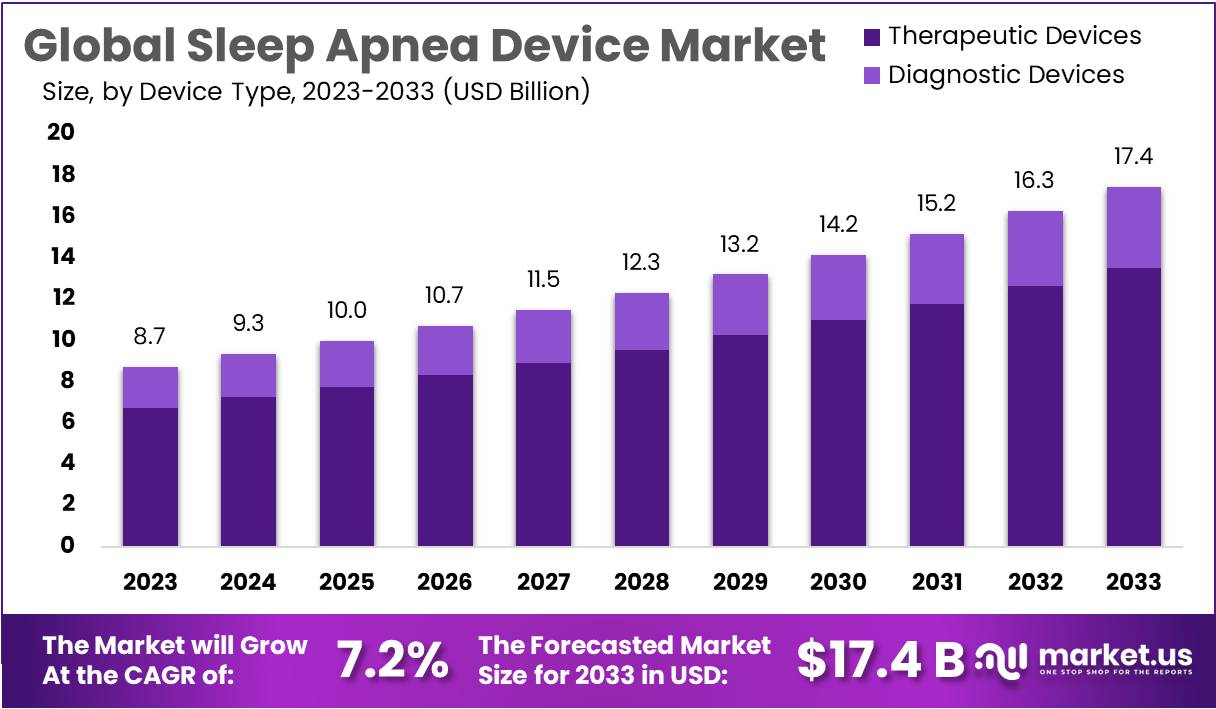
(Source: market.us)
- As the chart above shows, the global sleep apnea devices market is predicted to grow at a 7.2% CAGR, and the estimated market size by 2022 will be $17.4 billion.
- It was valued at $5.2 billion in 2020 and is projected to continue growing at a rate of 6.9% annually until 2028.
- The market for treating a specific type of sleep apnea, Obstructive Sleep Apnea, is expected to reach a value of $7.69 billion by 2025.
- Despite this growth, more than 80% of people with sleep apnea in the United States are still not diagnosed.
- In 2020, about 60% of diagnosed cases worldwide were considered moderate to severe.
- In the U.S., it’s estimated that 40 out of every 100 people aged 40 and above who snore regularly actually have obstructive sleep apnea.
- Diagnostic devices dominated the market in 2020, accounting for over 60% of the market share.
- The number of Continuous Positive Airway Pressure (CPAP) devices, which help keep the airways open during sleep, is expected to grow at a rate of 7.8% annually.
- Positive airway pressure (PAP) devices, including CPAP, are the most common therapeutic devices for sleep apnea.
- As of 2020, nearly 936 million people worldwide are believed to have mild to severe sleep apnea.
- In the Asia Pacific region, the prevalence of sleep apnea is expected to rise due to increasing obesity rates, leading to higher demand for sleep apnea devices.
- Philips held the largest share of the market in 2019. Growth in the sleep apnea devices market is driven by factors such as rising obesity and cardiac conditions, which are often associated with sleep apnea.
- North America led the market in 2020, while oral appliances accounted for about 17.3% of the total market in the same year.
- In 2019, the sleep apnea services market was valued at $4.4 billion. This encompasses various services related to diagnosing and treating sleep apnea.
Conclusion
New research is always coming out on healthy sleep, sleep disorder treatment, and sleep disorders. If we think that we have a sleep disorder, it’s essential to get tested as soon as possible. There are many websites and medical helpers who can help you with this issue.
The sleep statistics have shed enough light on sleep cycles and global issues. Medications can be essential to help people get quality sleep.
Sources
FAQ.
People generally spend almost 20%of the night in a deep sleep. At the time of deep sleep, the body strengthens its bones, tissues, bones, and immune system.
Adults between 27 and above who sleep less than 6 hours a day are almost 7.5 times more likely to have a high body mass index.

Barry is a technology enthusiast with a passion for in-depth research on various technological topics. He meticulously gathers comprehensive statistics and facts to assist users. Barry's primary interest lies in understanding the intricacies of software and creating content that highlights its value. When not evaluating applications or programs, Barry enjoys experimenting with new healthy recipes, practicing yoga, meditating, or taking nature walks with his child.
